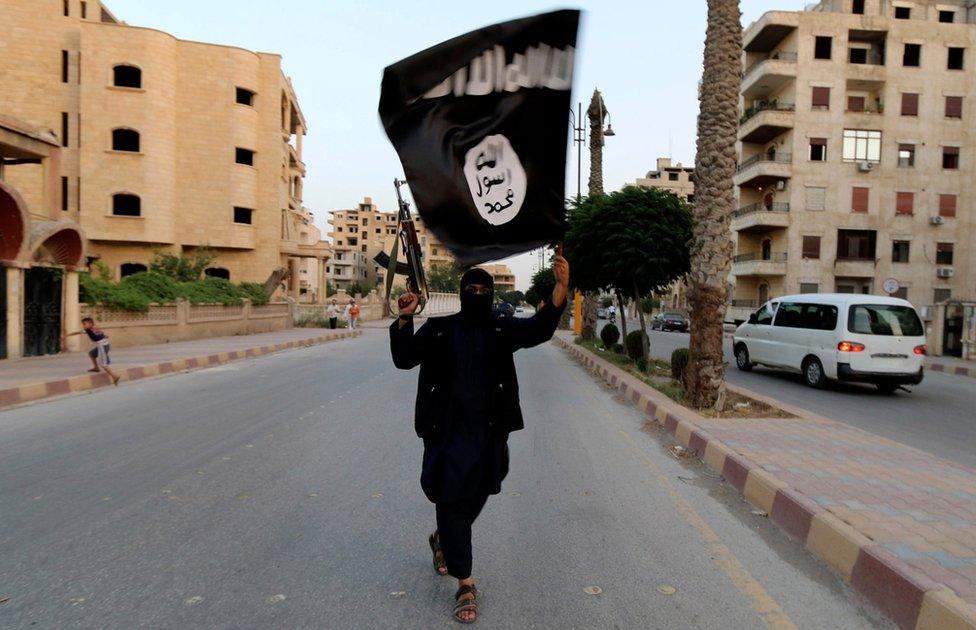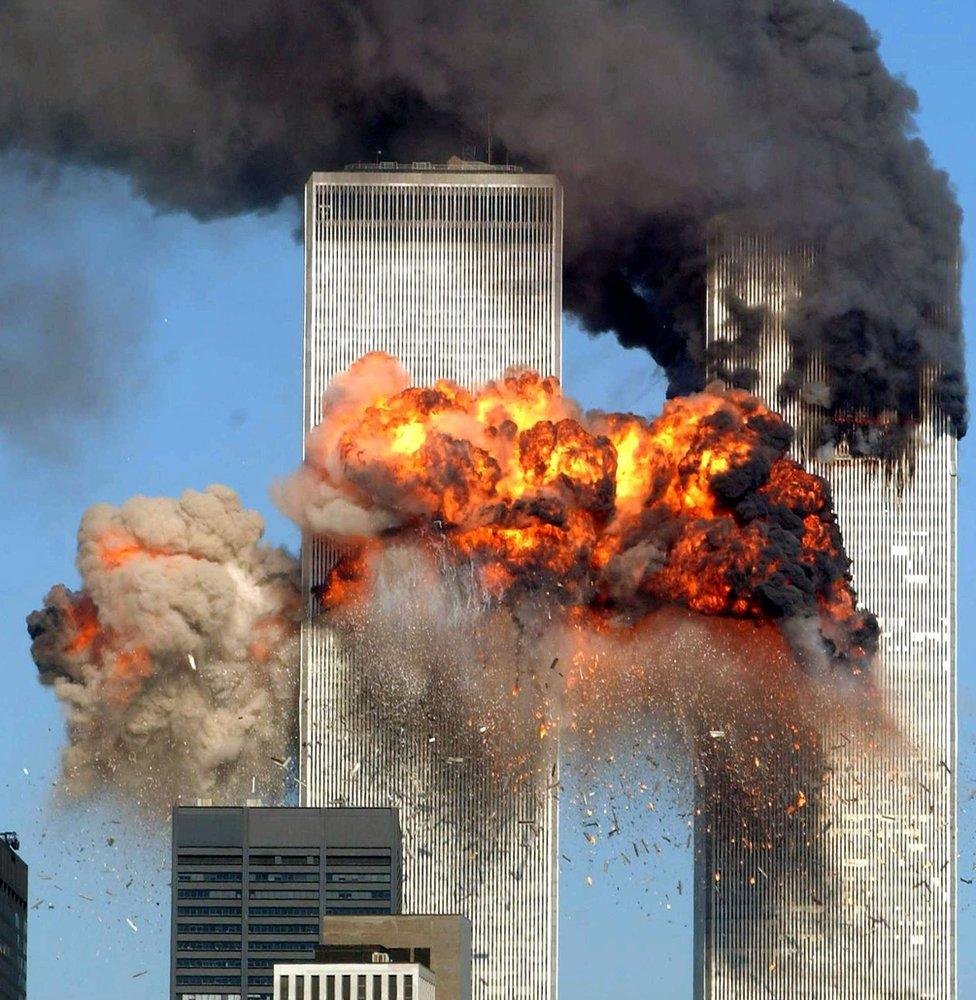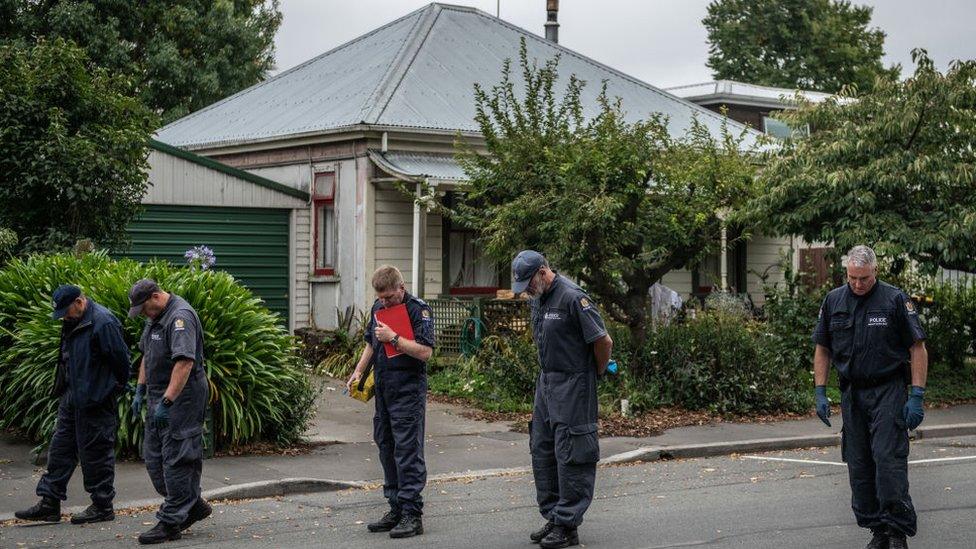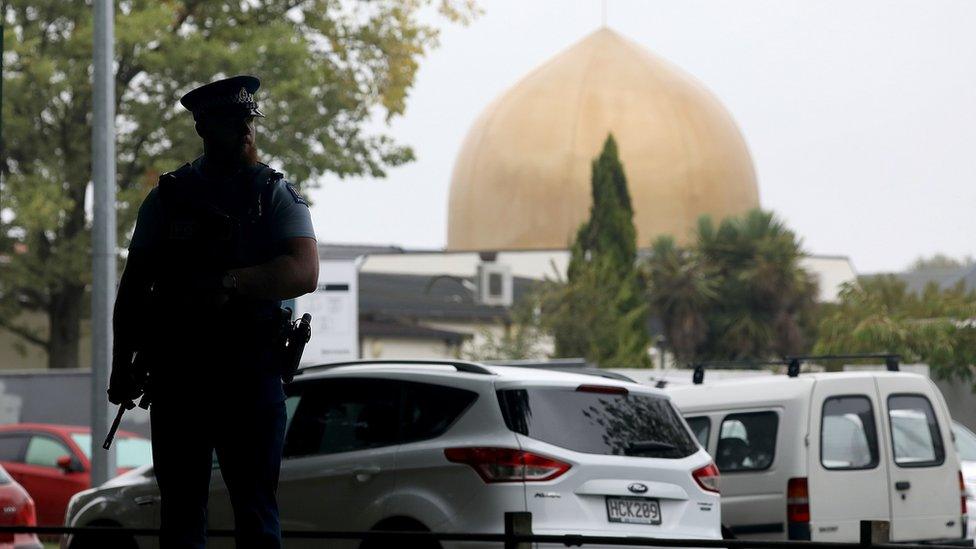The unlikely similarities between the far right and IS
- Published

What do Britain's far-right groups and Islamic State militants have in common?
Far-right extremists in Britain have been accessing terrorism material published online by the Islamic State group, counter-terrorism experts have told the BBC.
They say neo-Nazis and other right-wing extremists have been studying methods of attack shared by jihadists with their followers on the internet.
But we should not be surprised that they do share some similarities.
'All-consuming hatred'
Since the middle of last year, MI5, the security service, has been tasked with helping the police tackle the growing threat from British far-right extremists.
Counter-terrorism officers have been using a range of methods, including phone taps, to gather intelligence on what the most violent individuals have been planning or aspiring to do.
In some cases, arrests have been made after suspects have been caught downloading child pornography. But officials say that neo-Nazis and other extremists have also been accessing material to plan attacks published by their ideological enemies, Islamic State.
This may seem strange, but it should not come as a surprise.
Their ideologies may be diametrically opposed to each other but there are some disturbing similarities between them, some of which are obvious, others less so.
Many white supremacists and violent Islamist extremists tend to inhabit a narrow-based world dominated by an all-consuming hatred and a total intolerance of anyone's views but their own.
For the jihadists of IS, for example, this means treating not only non-Muslims as enemies but also Shia Muslims and anyone they see as co-operating with "the non-believers".
Using the concept of "Takfir", jihadists will declare even their co-religionists as "unbelievers" and "apostates" and therefore in their eyes a legitimate target.
This narrow-based intolerance, coupled with gratuitous violence, has been a major factor contributing to the inability of al-Qaeda, IS and other groups to appeal to a wider swathe of Muslim populations around the world.
Likewise in the UK and the rest of Europe, far-right extremists see as enemies all those who - in their eyes - have helped enable changes that they dislike, such as allowing inward migration from Asia and Africa.
In 2011, the Norwegian extremist Anders Breivik carried out his murderous attack in Oslo, not on Muslims or immigrants, but on youth members of a party he blamed for changing the racial mix of Norway.
'Vile material'
White supremacists rail against a multicultural society.
So too do jihadists. They refer to Muslims living in the West as being "in the grey zone" and constantly urge them not to mix with the predominant non-Muslim populations in Europe.
Both far-right extremists and jihadists see themselves as righteous purists, yet they want very different societies.
What they do share in common is an often obsessive interest in extremely graphic imagery online, much of it encrypted but some of it circulated more widely for recruitment purposes.
Counter-terrorism officers have described some of this material as so vile that staff monitoring it have had to be given counselling.

Extremists have made use of images of terror attacks, including the 9/11 attacks in New York
In the years immediately after the 9/11 attacks of 2001, al-Qaeda made constant use of the imagery of planes going into the Twin Towers.
IS took this a stage further, shocking the world with its gruesome videos of hostages appearing to be beheaded on camera, as well as other atrocities such as men being thrown off high buildings after being "convicted" of homosexuality.
While these had the effect of alienating mainstream Muslim populations, they simultaneously attracted to the cause young men from around the world who often had criminal, psychopathic or sadistic dispositions.
During the IS self-declared caliphate between 2014 and 2019, its practice of enslaving Yazidi girls as young as nine for sex is known to have attracted paedophilic recruits from European countries.
Whitehall officials say far-right extremists have been sharing violent, satanic and occult images and videos, sometimes using gaming and music forums to recruit new members.
The aim, they say, is partly to desensitise people for the violence they believe is inevitable in a coming clash of civilisations.
Lack of cohesion
However, one area where the two groups do differ widely is in co-ordination and cohesion.
Broadly speaking, jihadists are united in wanting to see their ultra-strict version of Sharia Islamic law forcibly imposed on everyone under their rule.
But in Britain, far-right groups that have mostly splintered off from the now-banned National Action show little sign of working together.
Some aspire to what they see as racial purity, others want their own territory where only their own laws apply, while others are simply anarchists, bent on destroying "the system".
- Published19 March 2019

- Published18 March 2019

- Published18 March 2019
